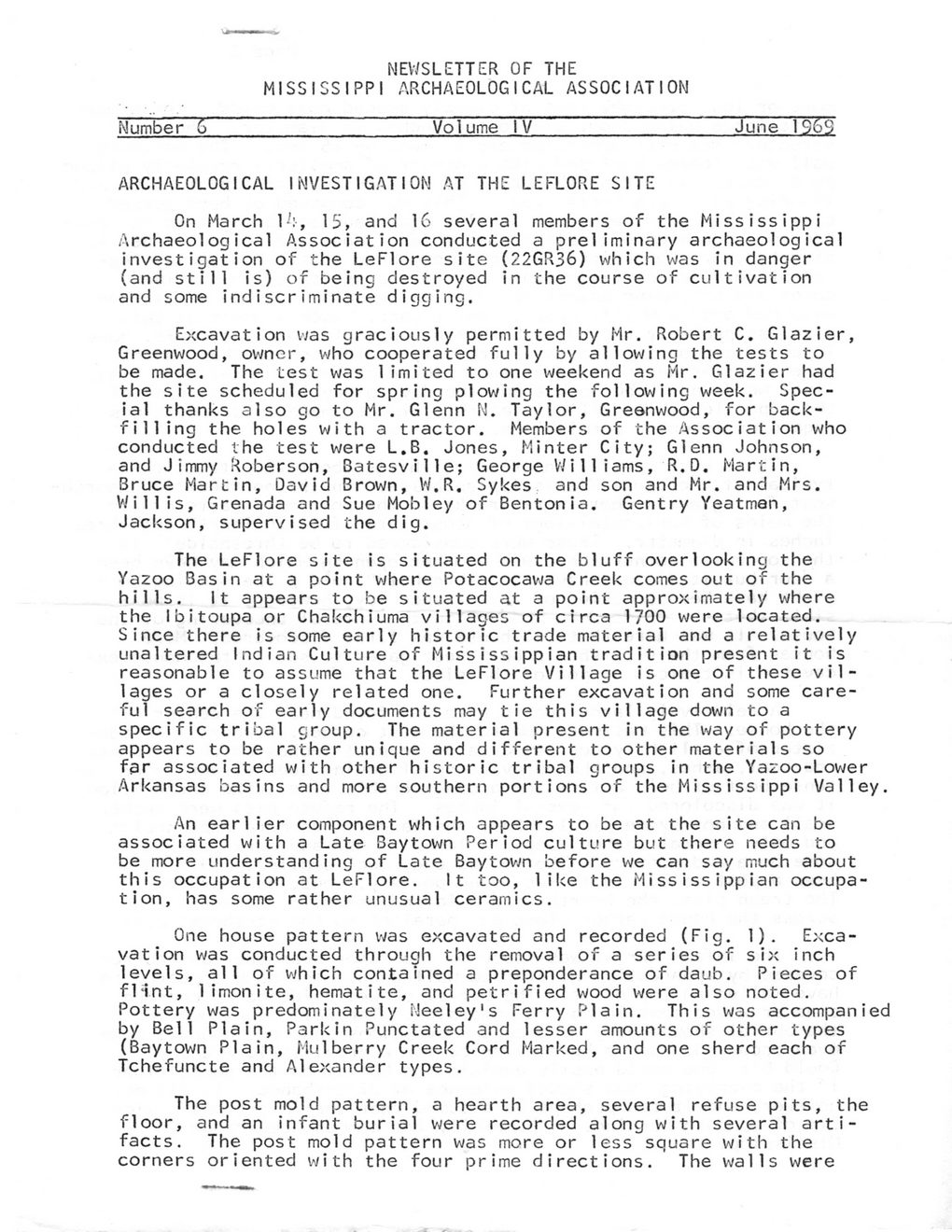This text was obtained via automated optical character recognition.
It has not been edited and may therefore contain several errors.
NEWSLETTER OF THE MISSISSIPPI ARCHAEOLOGICAL ASSOCIATION Number 6 Volume IV June 1969 ARCHAEOLOGICAL INVESTIGATION AT THE LEFLORE SITE On March W:, 15, and 16 several members of the Mississippi Archaeological Association conducted a preliminary archaeological investigation of the LeFlore site (22GR36) which was in danger (and still is) of being destroyed in the course of cultivation and some indiscriminate digging. Excavation was graciously permitted by Mr. Robert C. Glazier, Greenwood, owner, who cooperated fully by allowing the tests to be made. The test was limited to one weekend as Mr. Glazier had the site scheduled for spring plowing the following week. Special thanks also go to Mr. Glenn N. Taylor, Greenwood, for backfill ing the holes with a tractor. Members of the Association who conducted the test were L.B. Jones, Minter City; Glenn Johnson, and Jimmy Roberson, Batesville; George Williams, R.D. Martin, Bruce Martin, David Brown, W.R. Sykes and son and Mr. and Mrs. Willis, Grenada and Sue Mobley of Bentonia. Gentry Yeatmen, Jackson, supervised the dig. The LeFlore site is situated on the bluff overlooking the Yazoo Basin at a point where Potacocawa Creek comes out of the hills. It appears to be situated at a point approximately where the Ibitoupa or Chakchiuma villages of circa 1700 were located. Since there is some early historic trade material and a relatively unaltered Indian Culture of Mississippian tradition present it is reasonable to assume that the LeFlore Village is one of these villages or a closely related one. Further excavation and some careful search of early documents may tie this village down to a specific tribal group. The material present in the way of pottery appears to be rather unique and different to other materials so fdr associated with other historic tribal groups in the Yazoo-Lower Arkansas basins and more southern portions of the Mississippi Valley. An earlier component which appears to be at the site can be associated with a Late Baytown Period culture but there needs to be more understanding of Late Baytown before we can say much about this occupation at LeFlore. It too, like the Mississippian occupation, has some rather unusual ceramics. One house pattern was excavated and recorded (Fig. 1). Excavation was conducted through the removal of a series of six inch levels, all of which contained a preponderance of daub. Pieces of fHnt, limonite, hematite, and petrified wood were also noted. Pottery was predominately Neeley's Ferry Plain. This was accompanied by Bell Plain, Parkin Punctated and lesser amounts of other types (Baytown Plain, Mulberry Creek Cord Marked, and one sherd each of Tchefuncte and Alexander types. The post mold pattern, a hearth area, several refuse pits, the floor, and an infant burial were recorded along with several artifacts. The post mold pattern was more or less square with the corners oriented with the four prime directions. The walls were

Walden 005